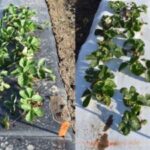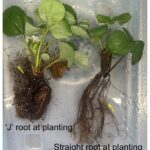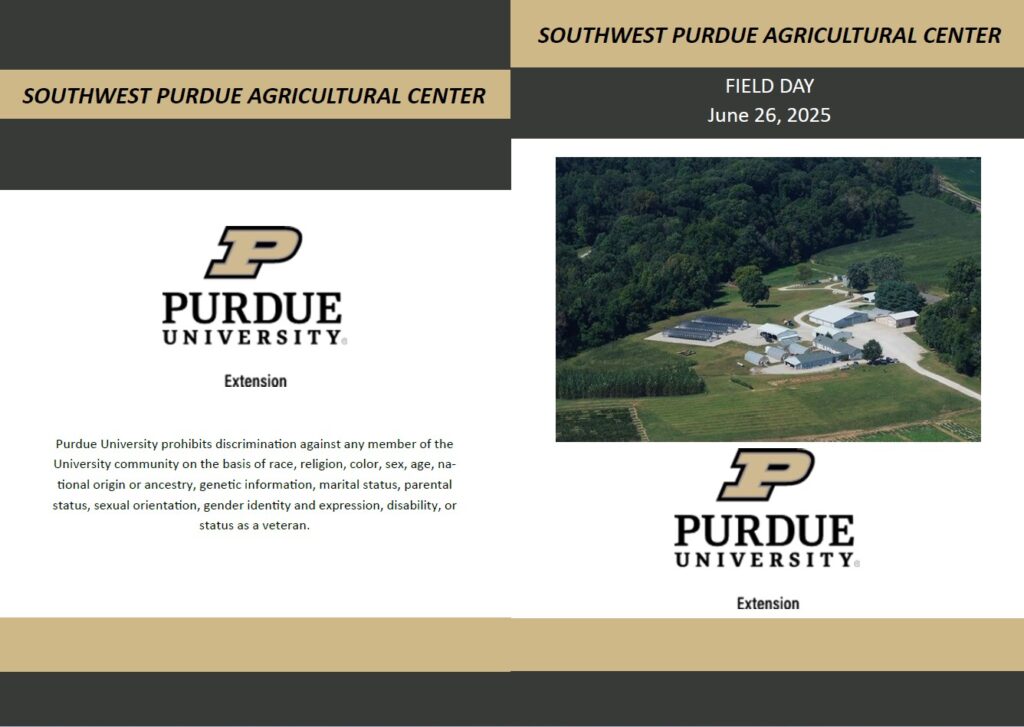From 2022 to 2024, we evaluated the performance of 15 June-bearing strawberry cultivars grown in a plasticulture system using black and white-on-black plastic mulches at two locations in Indiana: the Southwest Purdue Agricultural Center in Vincennes, IN, and the Meigs Horticulture Research Farm in Lafayette, IN. During the experimental period, monthly average temperatures at the[Read More…]
A new StrawberryChat podcast episode was posted: Farmer Interview with McNitt Growers: Neopestalotiopsis and Resistant Varieties | Episode 20, May 16, 2025 In this episode, we talk with Bill McNitt, owner of McNitt Growers—a nursery specializing in spring bedding plants and fall strawberry plug production. Bill shares his firsthand insights into how Neopestalotiopsis disease has[Read More…]
From 2022-2024, we evaluated the performance 15 strawberry cultivars grown in plasticulture system using black and white-on-black plastic mulches (Figure 1) at two locations: Southwest Purdue Agricultural Center in Vincennes, IN (USDA hardiness zone 6b), and Meigs Purdue Agricultural Center in Lafayette, IN (USDA hardiness zone 6a). Strawberries were harvested for two seasons. Plug plants[Read More…]
The Southwest Purdue Agricultural Center (SWPAC) is one of the eight Purdue Agricultural Centers located across Indiana. What makes SWPAC unique is its location in the heart of Indiana’s watermelon-growing region—home to one of the state’s most significant specialty crop industries. In addition to watermelon and cantaloupe, southern Indiana is known for its diverse fruit[Read More…]
Bare-root strawberry plants often arrive with roots that are 6 to 10 inches long. For optimal planting, the roots should be kept straight, which requires digging a deep hole or using specialized tools. If the planting hole is too shallow, the roots may bend and form what is known as a ‘J-root’. You may have[Read More…]
The Southwest Purdue Agricultural Center (SWPAC) is one of the eight Purdue Agricultural Centers located across Indiana. What makes SWPAC unique is its location in the heart of Indiana’s watermelon-growing region—home to one of the state’s most significant specialty crop industries. In addition to watermelon and cantaloupe, southern Indiana is known for its diverse fruit[Read More…]
Crop Status Plug plants set on black plastic mulch in late summer and early fall are approaching full bloom. Some early blooms may have been damaged by recent low temperatures. Moving forward, growers should remain vigilant in protecting these crops from potential frost injury (Figure 1). Bare-root plants that were planted on white plastic during[Read More…]
Strawberry Growers: Navigating the Challenges of Neopestalotiopsis Disease If you’re expecting plug plants for your strawberry crops, you’ve likely heard about the emerging threat of Neopestalotiopsis disease. For those unfamiliar, I recommend reading Dr. Phil Brannen’s article, “Dramatic Neopestalotiopsis Disease in Strawberry Tips and Plug Plant Production Nurseries“ from the University of Georgia Extension. Recently,[Read More…]
This year, the strawberry season throughout Indiana seems to be early by about 10 days to 2 weeks, regardless of the production system. In southern Indiana, I heard the harvest lasted from mid/late April until mid-May in some fields. In central I ndiana, the harvest started in mid-May and is nearing its end in early[Read More…]
According to the newly released 2022 Census of Agriculture, Indiana has 248 farms growing strawberries, a 25% increase from 2017 when there were 199 such farms. This rise is particularly notable because the number of strawberry farms had decreased from 250 to 199 between 2012 and 2017. Despite the increase in the number of farms[Read More…]






